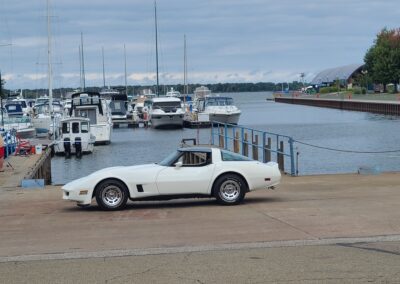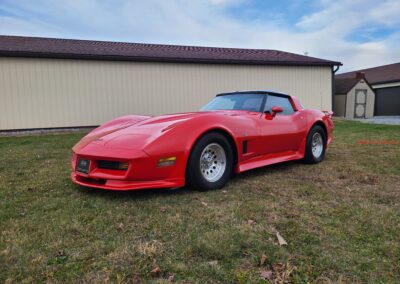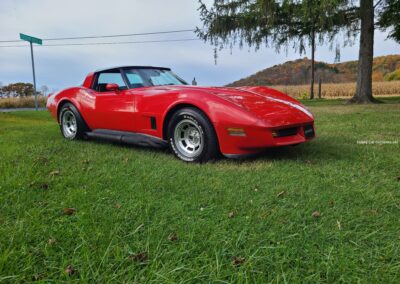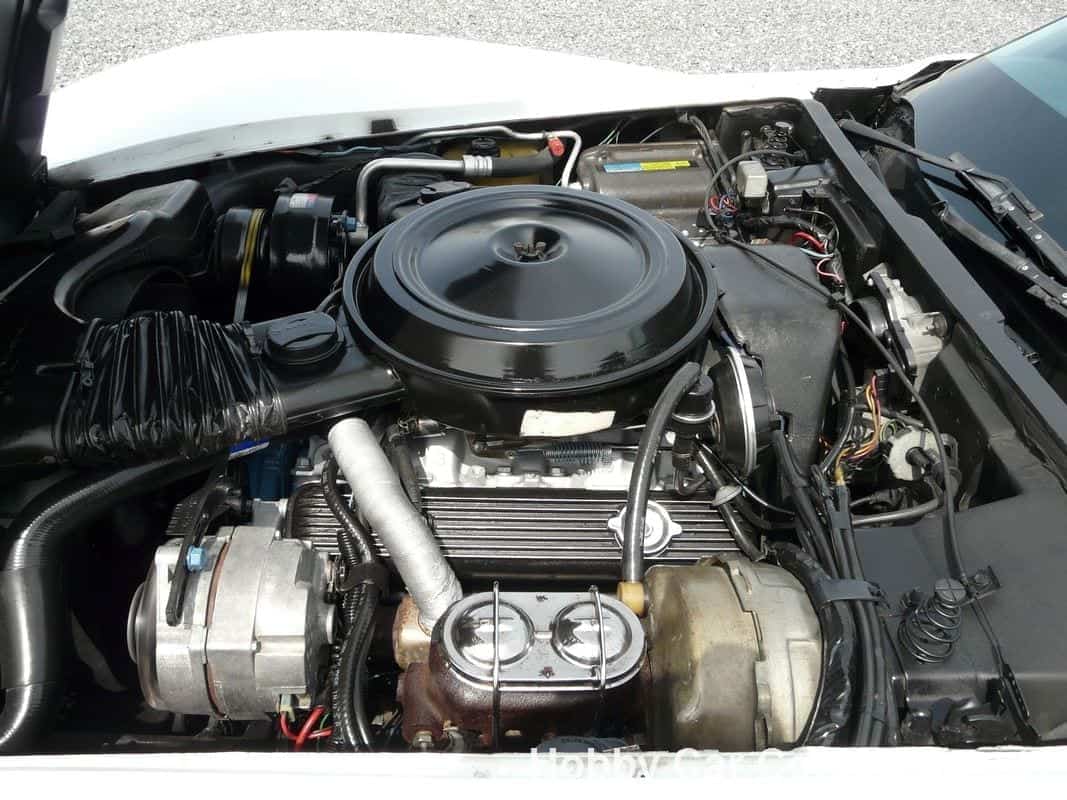The Evolution of Emissions Standards
The C3 era saw American emissions standards, born in the 1960’s, grow to effect auto manufacturing significantly. From the beginning, California led the way with emission standards. California was especially motivated to address emissions, due to the extraordinary circumstances of population, climate and topography that generated the worst air in the nation. In 1970, the federal government officially authorized the state to set its own separate and stricter vehicle emissions regulations. California saw the creation of the PCV valve, catalytic converter, and numerous other emission control systems to help reduce pollution. By the end of 1979, the CARB (California Air Resources Board) administrators had created such high standards that all auto manufacturers had to make drastic changes to the 1980 model year cars to continue to sell cars in California.
Why California Was Important
 California is renowned for its lavish lifestyles and glorious weather. It is the most populous state in the US and has been for many decades. For most automakers, it has been worthwhile to meet its more stringent environmental regulations because the automakers can sell to a much larger audience.
California is renowned for its lavish lifestyles and glorious weather. It is the most populous state in the US and has been for many decades. For most automakers, it has been worthwhile to meet its more stringent environmental regulations because the automakers can sell to a much larger audience.
To meet the new California regulations for the 1980 Corvette, GM had to use the 305 engine and only the automatic transmission in the Corvettes going to that state. While the change meant that the cars would pass the emissions tests for California, it also contributed to the drastic reduction in the number of L82’s ordered- from 14,516 in 1979 to 5,069 in 1980. GM had also dropped the close-ratio manual transmission option in 1980, offering only the wide-ratio manual transmission. This led to a significant drop from 12,353 manual transmissions in 1979 to 5,726 in 1980. This meant GM could not justify the costs that would be associated with making the 1980 L82 4-speeds pass emissions testing after the test mules failed in preproduction testing. It is possible that a few early models were sold, but the 1980 L82 4-speed was never officially released. 1980 was the first year since 1974 that GM offered 3 different engines in the corvette. Unfortunately, the third option was the smallest cubic inch engine installed in a corvette since 1961.
Ordering a Corvette 1980 L82 4-speed
One of the reasons that I know that the car was not officially released was because a friend tried to purchase one back in 1979. This is a fact that he had all but forgotten until he found the paperwork a few years ago, as he was cleaning out his filing cabinets.
He had ordered an L82 engine with a MM4 4-speed manual transmission. This was clearly stated on the rejection letter that he received from the Chevrolet Motor Division. The rejection letter went on to say that if he wanted to get a similar model, he would need to order the RPO Comb L82, with the MX1 Turbo-Hydromantic Automatic Transmission. While they didn’t put a date stamp on their rejection letter, they did include the date when he placed the order – 10/08/79. He resubmitted his order for the L48 engine with MM4 manual transmission, and received his corvette in March of 1980.
At some point, he decided to check back to see if the original model he wanted was going to be offered because it still appeared in some of the books. GM responded that the original vehicle had failed to pass the emissions certification, and that because it had a low volume of car sales, they were not going to pursue production with the modifications that would ensure it would pass the test.
Classic Corvette Buyers Guide!
So Were Any Built?
Given the timelines of when the car was first listed and the emission requirements by the end of 1979, it is incredibly unlikely that any of these cars were produced or sold on the market. If you find someone claiming to be selling a 1980 Corvette L82 4-speed, chances are that the car is not what they think it is, or they are not being honest about what they are offering. According to GM in an article they posted in their end of the year 1979 Corvette news, it was discontinued. They elaborated further in the Vette Vues of November 1979, saying that, “…there is a good chance that the L-82 engine will not be installed in ANY 1980 Corvettes. It is our understanding from a third-party source that the L82/Automatic has not met EPA certification, and may be held back. We know for certain that the L82/4 Speed Manual Transmission will not be available, and that combination, last produced during the 1979 model run, will be the last of a long series of engine/transmission combos.”
Given the fact that the automakers themselves said that the car would not be sold, it is highly unlikely that you are going to find a Corvette that was made that way. It is more likely that you will find one that was modified to be (or appear to be, thanks to cheap hood badges), the model that people originally had expected.
If you have your heart set on a 1980 L82 Corvette, and can live with an automatic transmission, check out the two we currently have in stock:
If you just can’t give up the fun of shifting that manual transmission, we also have some 1980 L48 4-speeds for you to choose from:
New Arrivals 1980

Just Arrived
1980 Burgundy Corvette Black Interior For Sale
350 engine, automatic transmission, 94,441 original miles, A/C, black interior, power steering, power brakes, power windows, tilt and telescopic steering column, dual sport mirrors, AM/FM/CD
Automatic

Just Arrived
1980 White Corvette Red Interior Hot Rod For Sale
350 engine, automatic transmission, 94,441 original miles, A/C, red leather interior, power steering, power brakes, power windows, tilt and telescopic steering column, dual sport mirrors,
Automatic

Just Arrived
1980 Black Corvette 4spd Oyster Interior For Sale
Don’t miss out on this incredible opportunity to own a rare and stunning 1980 Corvette! With only 37,878 original miles, this beauty boasts a numbers
Manual
L48/350
37,878 original

Just Arrived
1980 Silver Corvette Red Interior T Top
Numbers matching, L48/350 engine, 99,999 miles on dash (title is exempt for mileage), automatic transmission, power steering, power brakes, power windows, red leather interior, tilt
Automatic
L48/350
99999 on dash

Just Arrived
1980 White Corvette Red Int For Sale
Numbers matching, L48/350 engine, automatic transmission, 94,441 original miles, A/C, red leather interior, power steering, power brakes, power windows, tilt and telescopic steering column, dual
Automatic
L48/350
94,441 on dash

Just Arrived
1980 White Corvette Black Interior 4spd For Sale
Numbers matching, L48/350 engine, 84,873 original miles, 4 speed manual transmission, black leather interior, power steering, power brakes, power windows, AM/FM/CD, glass T Tops, tilt
Manual
L48/350
84,873

Just Arrived
1980 Red L82 Corvette Black Interior For Sale
Numbers matching, 44,714 original miles, L82/230hp engine, automatic transmission, black custom interior, power steering, power windows, A/C, glass t tops, power brakes, AM/FM radio, aftermarket
Automatic
L82/350
44,714 Original

Just Arrived
1980 Real Red Corvette T Top
Numbers matching, L48/350 engine, automatic transmission, 39,020 original miles, glass T-Tops, black leather interior, alloy wheels, AM/FM radio, power steering, power brakes, power windows, sport
Automatic
L48/350
39,020 Original

Just Arrived
1980 Red Corvette Oyster Interior T Top For Sale
350 crate engine, automatic transmission, 63,983 original miles, X-A/C, oyster leather interior, alloy wheels, power steering, power brakes, power windows, AM/FM/Cassette player, sport mirrors, tilt
Automatic
350
63,983 Original










